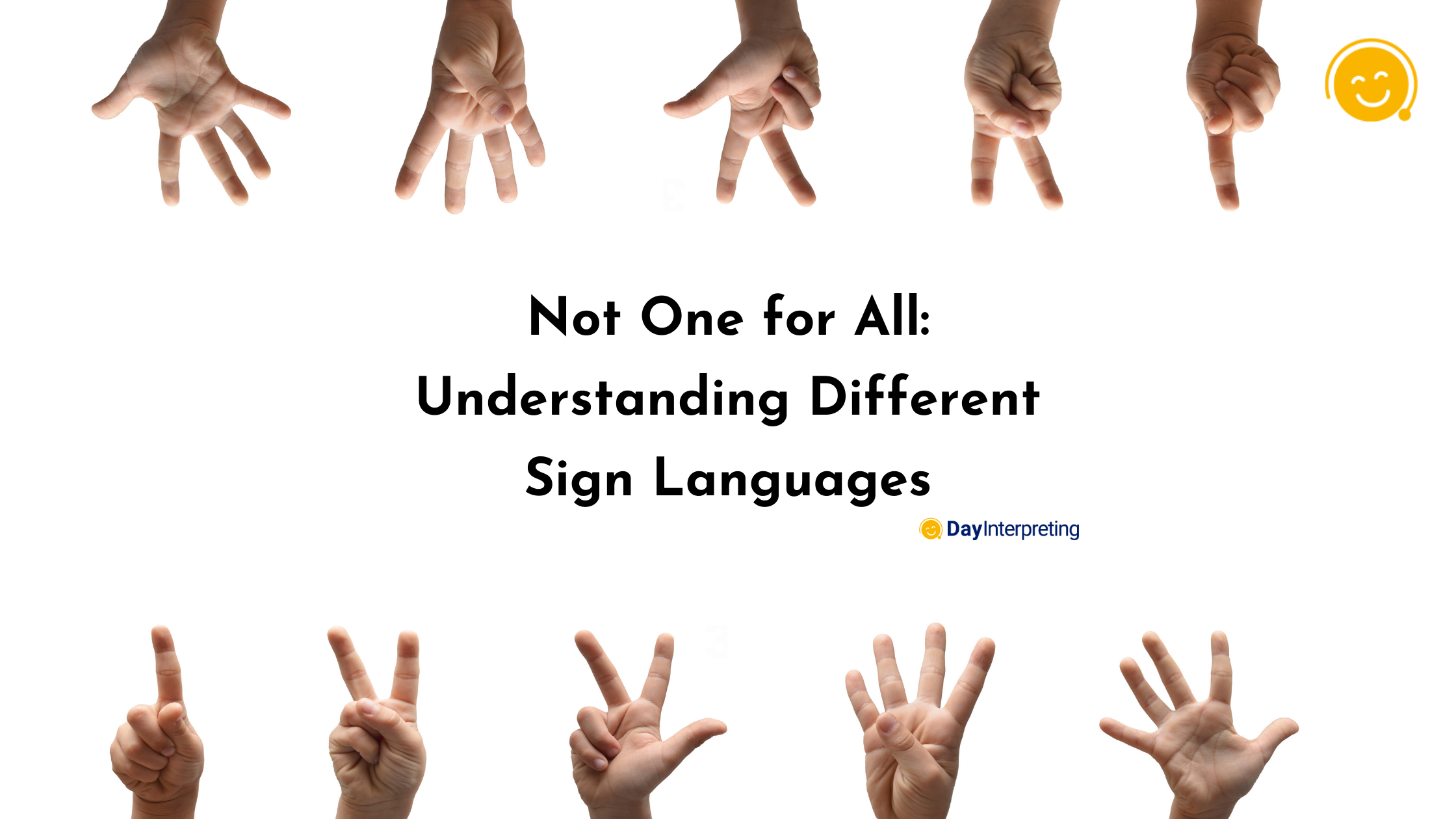Did you know that there are a variety of different sign languages? Even if you don’t speak it, you’ve probably encountered sign language in public or at a conference. But there’s a lot more to this language than meets the eye. For starters, there are many other variants of the widely-known American Sign Language (ASL).
Did you know that there are 142 sign languages in use across the world? That number has probably increased and will continue to do so. Why? Well, because new sign languages are frequently created in communities. Sign language is a complex form of communication. It includes hand gestures, body language, and facial expressions to allow deaf individuals to communicate their thoughts and feelings.
Like any spoken language, different sign languages develop naturally within groups of people. They also vary greatly depending on regions and cultures. Contrary to popular belief, sign language is not universal. And people that do not sign the same language can’t understand each other.
The Basics of Different Sign Languages
Given the fact that there are so many different sign languages, Day Translations decided to share a few golden nuggets of wisdom and fascinating facts about sign language. Here’s a look at what everyone needs to understand about sign language!
Universal Sign Language Isn’t an Official Language
International Sign (also called Gestuno, International Sign Pidgin or International Gesture) is theoretically a universal sign language. This language is used at international events such as the Deaflympics.
The problem with International Sign is that it has been criticized for drawing too much from European and North American sign languages. This has a negative impact on deaf and hard of hearing people from other parts of the globe.
Strictly speaking, International Sign may also not meet the requirements of being classed as a true language. It has been argued that this language is a complex pidgin, a simplified form of communication to facilitate conversations between groups of people that speak different languages.
Sign Languages Do Not Always Represent Spoken Language
American Sign Language (ASL) is different from British Sign Language (BSL), but English is the primary language in both countries.
That said, there is a lot of contact between spoken and sign language. Deaf people can read, write, and lipread in the surrounding language, which is reflected in sign language. Although English can be represented through fingerspelling or Signed Exact English, these are codes for spoken languages and not actual languages like sign language.
There are also many rules when it comes to well-formed sentences in sign language. For example, well-formed questions must have the right eyebrow position. When you’re asking a question related to who, what, where, when, and why, your eyebrows should be down. But when asking a yes or no question, the eyebrows must point up. Without using the right gestures, a sign language interpreter might have a “foreign” accent.
Popular Sign Languages Across the World
Each of the different sign languages has their own dialects, variants, and what might be considered accents. Some dialects include features derived from indigenous languages, while other dialects vary from one region to another.
Signs used by British Sign Language speakers in Scotland, for example, might not be understood by speakers of the “same” sign language in southern England. That said, here’s a look at some of the best-known variants of sign language:
American Sign Language (ASL)
You don’t necessarily need speech, reading, or listening skills to learn ASL since this manual language comprises ideas that are easy to understand. ASL is free-flowing and can be translated into spoken languages. It has its own syntax, grammar, and idioms and is signed in countries across the world.
British Sign Language (BSL)
BSL has a plethora of dialects that vary from one region to the other. British Sign Language uses a two-handed alphabet in contrast to ASL that uses a one-handed alphabet.
Auslan (Australian Sign Language)
Auslan has a Northern and Southern dialect, each using different signs for things like colors, animals, and days of the week. Grammatical structure is the same across both dialects, though, and this language is closely related to BSL, also using a two-handed alphabet.
Chinese Sign Language (CSL)
The signs used in CSL are visual representations of written Chinese characters, and like ASL, Chinese Sign Language uses a one-handed alphabet. Although there are many dialects of CSL, the Shanghai dialect is most commonly used.
Irish Sign Language (ISL)
ISL is related to American Sign Language and French Sign Language and is predominantly used in Northern Ireland. Contrary to the origins and name of this language, it is not related to spoken English or Irish.
Japanese Sign Language (JSL)
JSL varies dramatically from most other sign languages because it uses mouthing to distinguish between signs and letters within the alphabet. JSL also relies heavily on fingerspelling and drawing Japanese characters in the air.
French Sign Language (LSF)
French Sign Language is widely used throughout France and Switzerland and was one of the first languages to be recognized and formalized as an actual language. LSF formed the basis for American Sign Language by mixing LSF and local signing.
Final Thoughts
Language informs and cultures form it. Even though certain languages like ASL, BSL, and LSF are widely spoken globally, each has its own dialects and accents that make them unique. You encounter many different Spanish dialects while traveling through each region of Spain. Similarly, sign languages are region-and-culture specific to facilitate communication between locals better.





0 Comments